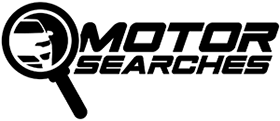What They Call It Elsewhere
Not every car wears the same badge around the world. Marketing teams tweak names to suit factors like local tastes or even road conditions. A familiar model might even wear a totally unrelated name in a new country. Let's check out these 20 American cars that bear different names overseas. How many of these are you surprised by?
1. Ford Edge
Ford didn't think "Edge" resonated in Australia. Their solution was a quiet rename: Ford Endura. Everything else—chassis, design, specs—stayed intact. "Endura" carried a soft endurance connotation, but it also avoided stepping on established SUV naming patterns that already filled Australian highways at the time.
2. Chrysler 200
Europeans weren’t offered the Chrysler 200. They got the Lancia Flavia—same car, different pitch. Fiat revived the old Italian name to add showroom credibility without new tooling. It was branding over engineering, a rebadge built entirely on badge equity and distribution convenience.
3. Chevrolet Trax
You wouldn't spot a “Trax” badge in much of Europe. Instead, GM leaned on Opel Mokka, a label already proven in the region. The name change was a move to retain dealership familiarity. In a crowded segment, that shortcut mattered.
4. Chevrolet Malibu
It was never flashy, but the Holden Malibu filled a much-needed midsize sedan slot in Australia. The car was shipped in, converted for right-hand drive, and quietly slotted into Holden's range. It wasn't about making headlines but plugging a gap without building new stock.
5. Chevrolet SS
Strangely enough, the Chevrolet SS wasn't even born in America. It was a rebadged Holden Commodore from Australia, imported and lightly altered. The move let GM offer a rear-drive V8 sedan without U.S. development costs. A domestic-sounding name, but very much an Aussie.
 Jeremy from Sydney, Australia on Wikimedia
Jeremy from Sydney, Australia on Wikimedia
6. Chevrolet Blazer
Chevy leaned into sporty vibes abroad by pushing only the RS trim in certain overseas markets. The Blazer didn't need multiple trims to make noise. In Latin America and the Middle East, the RS badge does the branding work by signaling sharp looks and premium intent.
7. Chevrolet Spark
When GM introduced the Spark to Australia, it came wrapped in Holden branding. But they didn’t stop there—it was renamed the Barina Spark, tying it to a local subcompact lineage. The hybrid name blended a global model with Holden's nostalgia for smoother showroom acceptance.
8. Chevrolet Traverse
When Holden needed a three-row SUV urgently, GM didn't build one from scratch. They brought in the Traverse, changed the steering wheel, tweaked a few specs, and sold it as the Holden Acadia. Same bones, new name, fit for Australian showrooms, and ready to move units.
9. Buick Regal
In Germany, badge trust matters. That's why GM leaned on the Opel Insignia across Europe. The car itself is nearly identical. However, Opel had a stronger brand currency. GM understood that swapping a name was cheaper than reeducating an entire continent about Buick's existence.
10. Chevrolet Equinox
To solve a product gap, Holden turned to GM's U.S. lineup. The Equinox, retooled for Australian roads, hit showrooms with Holden badges. Its launch was quiet but critical, replacing several phased-out models in one move without overhauling production.
11. Saturn Vue
The Opel Antara appeared on European roads, but this was the Saturn Vue, rebadged and adjusted for the region. GM made this swap during its brand reshuffle and gave Europe a familiar badge while avoiding the cost of launching Vue anew. The same chassis, but marketing wins again.
12. Buick Encore
GM didn't bet on a new name in Europe. Instead, they stuck with the Opel Mokka, a label buyers already recognized. No reintroductions, no rebranding costs. In doing so, they sidestepped a cold start. That move meant instant showroom relevance.
13. Ford Escape
Ford had already built recognition overseas with the Kuga, but when the Escape launched in the U.S., it didn't carry over the same name. The Kuga nameplate remained in Europe and China. It made more sense to preserve "Escape," an established identity for Americans.
14. Pontiac GTO
The 2004–2006 GTO revival wasn't American in origin. It was a rebadged Holden Monaro from Australia. Pontiac added a new grille and badge, but under the skin, it was pure Aussie muscle. The decision let GM resurrect a U.S. legend using a model already in production.
 Jeremy from Sydney, Australia on Wikimedia
Jeremy from Sydney, Australia on Wikimedia
15. Chevrolet Captiva
Holden needed a quick SUV solution, and GM delivered one straight from its global lineup. It became the Holden Captiva, matching regional tastes while saving on development. Though the badge was local, the design wasn’t, and that blend of familiarity and convenience kept it moving.
16. Dodge Journey
Fiat didn't reinvent the wheel but repurposed it. The Fiat Freemont, a rebadged Dodge Journey, launched in Europe with minor tweaks like diesel power and soft-touch trim. This was a shortcut to giving Fiat an SUV fast, without starting from scratch.
17. Chevrolet Aveo
Price-sensitive markets needed something more stripped down than the Aveo. That's where the Chevrolet Sail came in—essentially a locally adapted version aimed at emerging economies. In countries like China and India, the Sail made sense for what buyers wanted: basic transport over branding loyalty.
18. Chrysler Pacifica
When Fiat took the reins, the plan wasn't to push new sheet metal into Europe but to rebrand. Enter the Lancia Voyager, a Chrysler minivan wearing an Italian nameplate. It was sold through existing Fiat channels, bridging an old lineup gap with minimal effort.
19. Chrysler 300
European buyers recognized the Lancia name, so they welcomed the Thema. However, underneath the Italian badge sat Chrysler's 300, rebadged after Fiat took over. Styling cues stayed American, but the name leaned on Lancia's fading prestige. The gamble was to revive Lancia through Chrysler’s rear-drive luxury platform.
 Original uploader was NFS at it.wikipedia on Wikimedia
Original uploader was NFS at it.wikipedia on Wikimedia
20. Chevrolet TrailBlazer
Off-road readiness played better in Australia, so Holden leaned into it. They sold the global TrailBlazer under the Holden TrailBlazer badge, keeping the name but shifting the attitude. Its truck-based build gave it utility status there, not just another crossover in the crowd.

























